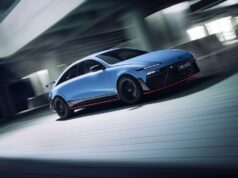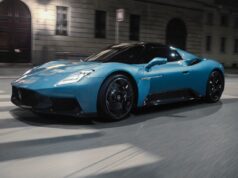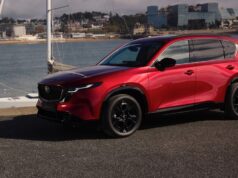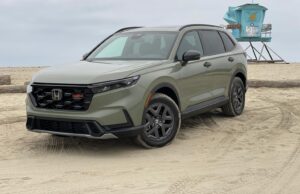The Toyota 86 and Subaru BRZ twins represent a barely existent segment, since the world has been taken over by crossovers. If you want to go against the trend, like you should, then there are plenty of fun cars out there if you don’t need to carry kids or loads of stuff with you. Here we have the Toyota 86, which is one of the most pure sports cars left on the market. In a world of sedans, crossovers and trucks, the Toyota 86 represents a segment that is about extinct, but could it save it?
Today if you want to buy a fun, slightly inexpensive coupe there are only a few options. At one end you have the Honda Civic Coupe and the sportier Civic Si, then there’s the two-seater Mazda MX-5 Miata, which is probably the 86’s closest competitor. At the other end you have the Mustang, Camaro and Challenger. The Toyota 86 is somewhere in the middle of these rivals with its minimalist design and feel, plus it’s easily left in the dust by even the base Ford Mustang and Chevy Camaro. So what’s there to love and hate about the 2017 Toyota 86? Here you go:
The Toyota 86 is a pure sports car
When Toyota and Subaru announced that they were teaming up at the end of the last decade to build a small rear-wheel drive coupe with a boxer engine, fans rejoiced. At the time Toyota needed to add something sporty to its lineup and Subaru’s sportiest offerings were the Subaru WRX and WRX STI models. When the 86, which was originally introduced as the Scion FR-S, debuted it was a simple sports car with a 2.0L naturally-aspirated four-cylinder engine that sent its power to the rear wheels.
That same combination still exists today even with the new 86 badge. The Toyota 86 is a no frills sports car that’s missing many of the tricks and luxury items that the Camaro and Mustang bring to the table. The 86 also makes you work a lot more, similar to the Mazda MX-5 Miata. You can’t simply just push the pedal to the floor here and expect the car to do the work, like in a much more powerful car. In the Toyota 86 you only have 205 horsepower if you choose the manual transmission so you have to work.
The 86 feels most like a pure sports car from the past, since its obvious that Toyota tried to keep it as light as possible. Weighing it at 2,800 pounds, the 86 is only about 400 pounds heavier than the two-seater MX-5 Miata and about 100-200 pounds lighter than the Civic Si. To keep that weight down, the Toyota 86 does without the normal amount of sound deadening materials that you’d expect. It’s interior is loud and raw with Toyota’s mission being to create a bare bones sports car that will packs more driving excitement than you’d expect.
Only 205 horsepower leaves you needing more
With only 205 horsepower and 156 lb-ft. of torque on tap, the Toyota 86 isn’t fast (200-hp and 151 lb-ft. with the automatic). But it’s not always about how fast you can get from one stop light to the next. Look at how much fans love the MX-5 Miata and that roadster only has 155 horsepower. Its 2.0L engine works hard to get you going, but sadly the engine is easily my biggest disappointment with the Toyota 86. It loves to make a bunch of noise, but at the end of the day a modern family sedan can easily out gun you.
Toyota and Subaru have resisted the idea of bolting a turbocharger onto the boxer engine, but that’s what it’s dying for here. Give it an extra 30-50 horsepower and people might pay attention to it more, but instead the 86 feels incredibly underpowered.
Perfect steering, sublime shifter
Once you’ve moved past the fact that nearly every other sports car on the market is going to zoom past as you try to merge on the freeway, you’ll realize that the 86’s chassis, steering and feel of the six-speed manual are near perfect. It’s steering is direct and precise, while the short throws of the manual transmission make you realize that the 86 really is a sports car.
Compared to the Miata MX-5, the 86 has a better driving position. You feel more connected to the car in the 86 than you do in the MX-5 and the Civic Si. Nearly every decision you make is directly transmitted to the road, compared to the softer Civic Si and MX-5.
The Toyota 86’s chassis is easily the most entertaining part. Its ride is firm, but not harsh and there’s very little body roll. Toyota did make a few tweaks to the 2017 86’s suspension to make it a bit sharper, while also not making the ride to harsh. At the end of the day it’s a lot of fun and there’s even a Track setting to quiet the stability control.
Summer tires would go a long way here
Although the engine may not send that much power to the ground, for some reason the tires are still outmatched here. The 17-inch all-season tires are obviously designed more for efficiency than sport here. It’s so easy to spin the wheels, which may be great the first few times, but if you want to get moving a little quicker, you’ll need to swap them out with high-performance summer tires.
Features? What features?
Here’s more proof that the Toyota 86 is designed more as a “pure sports car” since there are a lack of features available. There are only two trim levels available for the 2017 model year, the standard 86 or a Special Edition. The 2017 86 comes standard with 17-inch alloy wheels, LED lighting and a 7-inch touchscreen display. That’s about it, plus the typical power windows, locks and mirrors.
If you want a sunroof, that’s not an option. If you want a better audio system, you’ll have to fix that yourself. The standard 86 doesn’t even come with a push-button start, since that’s only available on the Special Edition. The Special Edition trim also adds automatic climate control, leather trimmed heated front seats, a navigation system and a TFT screen that shows lap times and G-force friction circles. If you’re hoping for a better infotainment system or Apple CarPlay connectivity, that’s not an option with the 86.
Pricing for the 2017 Toyota 86 starts at $27,150 if you choose the six-speed manual, but if you want the six-speed automatic, you’ll have to pay $27,870.


























